If you’ve ever dreamed of a garden brimming with fresh, nutrient-packed fruits but feel a little flustered at the thought, I fully empathize. My own gardening journey was much the same until I discovered blueberries – nature’s easy-to-grow superfood bursting with antioxidants.
In this blog post, we’re going on an adventure through every stage of cultivating and nurturing your very own blueberry bush at home, sprinkling insider tips along our path. So buckle up and get ready for this berry thrilling ride!
Key Takeaways
- Blueberries are easy to grow and require low maintenance, making them a perfect addition to any home vegetable garden.
- They are delicious and packed with essential nutrients, offering health benefits such as brain health, heart health, and digestion.
- Growing blueberries at home can be cost – effective compared to buying them from the store.
Benefits of Growing Blueberries at Home
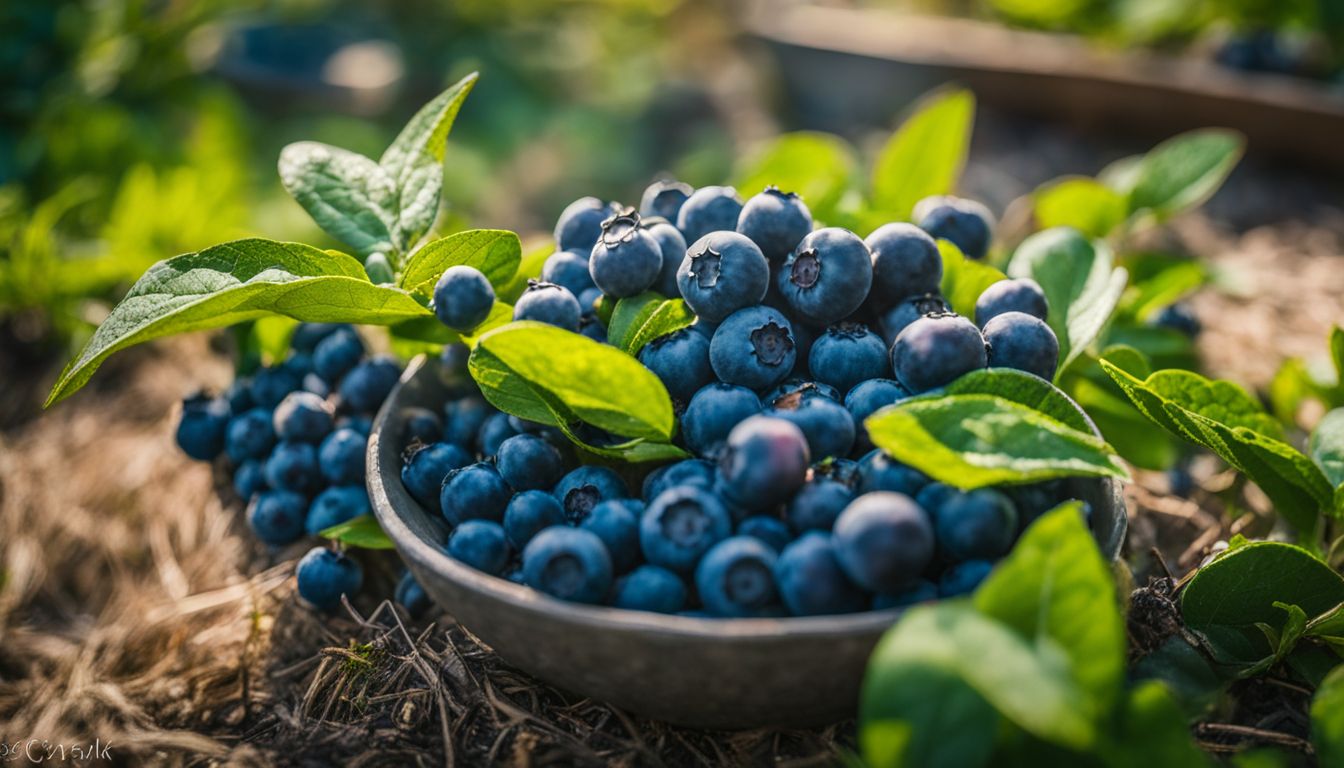
Growing blueberries at home offers several benefits. They are easy to grow and require low maintenance, making them a perfect addition to any home vegetable garden. Plus, they are not only delicious but also packed with essential nutrients.
Additionally, growing your own blueberries can be cost-effective compared to buying them from the store.
Easy and low-maintenance
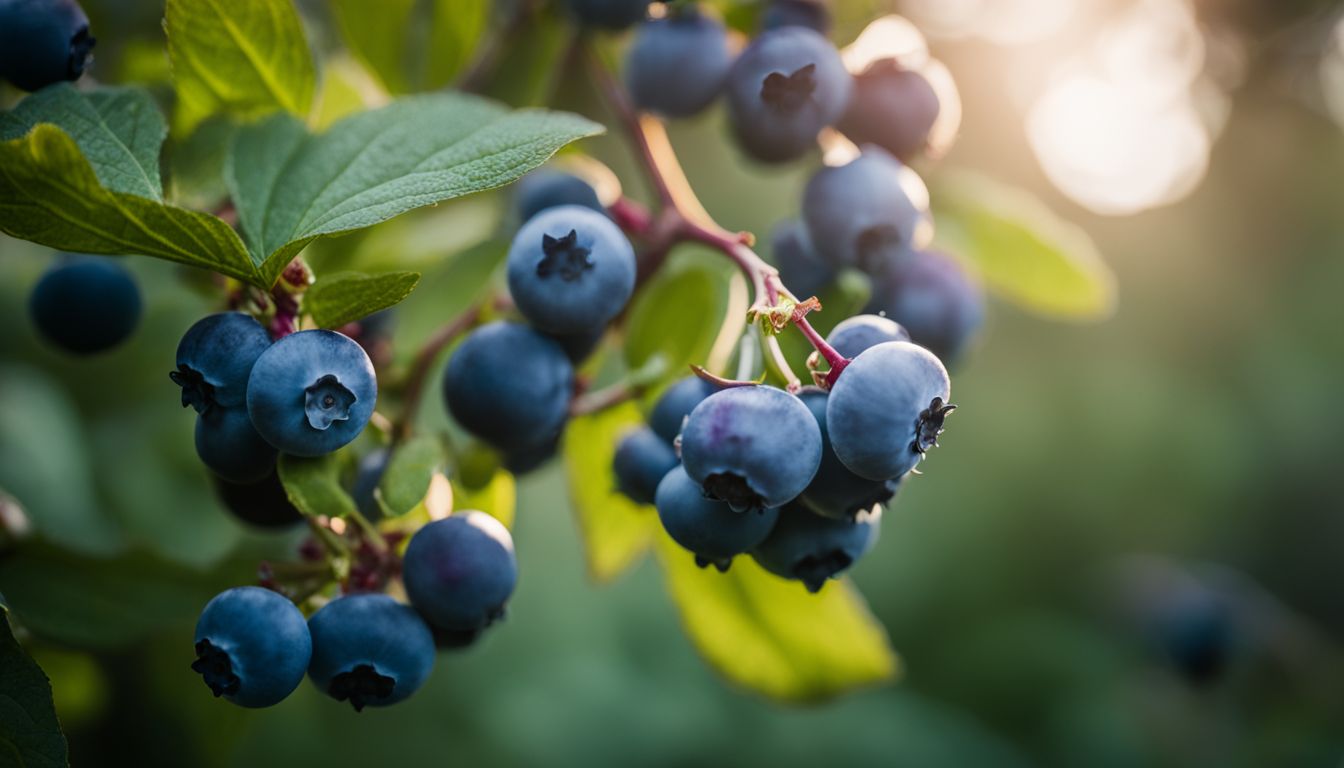
Blueberries are not hard to take care of. First, pick a sunny spot in your garden. Make sure there’s good dirt that drains well. Plant the blueberry bush in this spot and water it.
The roots of the plant will stay near the top of the soil, so don’t let it get too dry! You can also grow them in pots if you want. This is great for people who have small spaces or just like to keep things neat and tidy.
Plus, bugs and diseases don’t bother blueberries much.
Delicious and nutritious
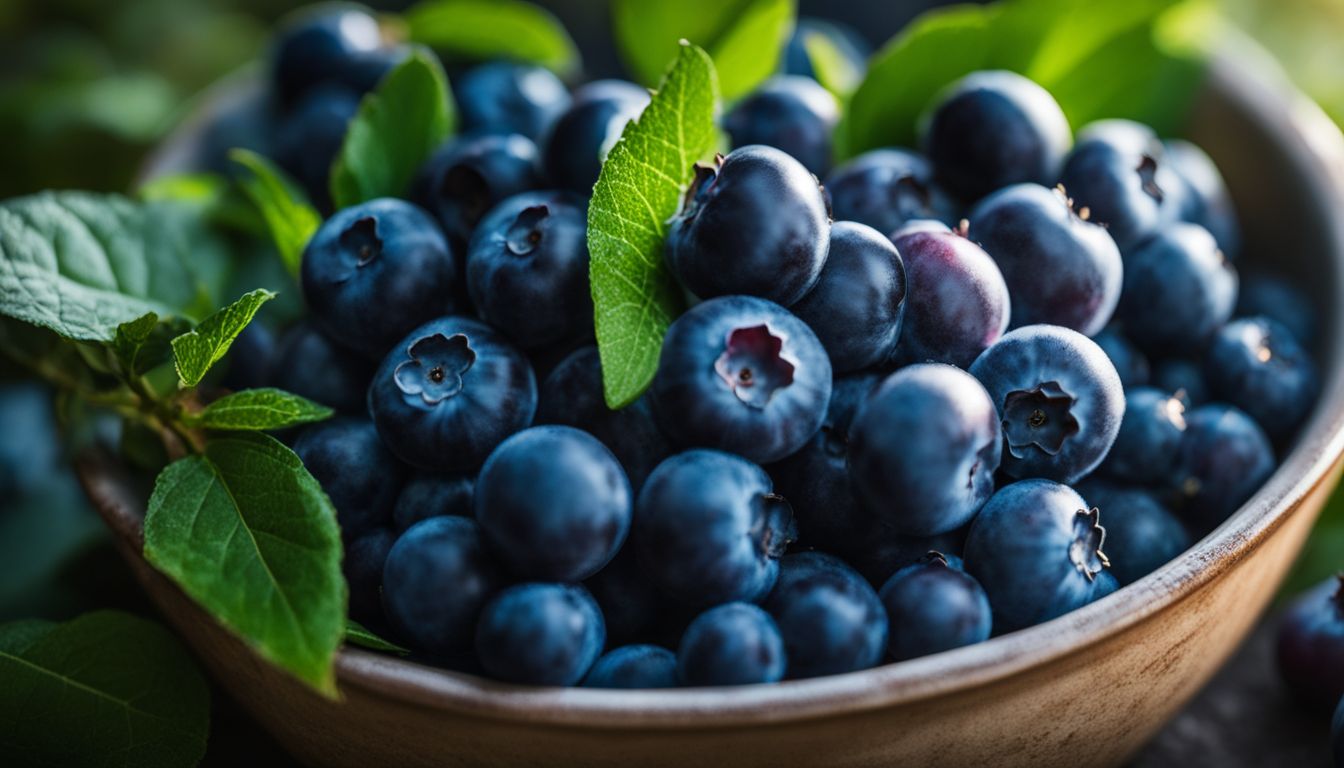
Blueberries pack a punch of taste and health. These juicy berries are more than just tasty. They offer lots of good stuff for your body too. Full of fiber, vitamins, and key nutrients, they keep you healthy and strong.
Every bit of the blueberry is good for you. The skin holds most of its antioxidants. These help fight off harm to your cells from things like air pollution and unhealthy foods. Blueberries can aid in brain health, heart health,and digestion.
So why not add these super berries to your diet? You get fresh fruit straight from your garden that’s good for you too!
Cost-effective

Growing blueberries at home can help save your money. You don’t have to buy berries from the store all the time. A healthy blueberry bush gives many berries in one season. After you plant it once, it will grow fruit for many years.
You only need to pay for seeds or a young plant and some soil care at first. It’s also nice not spending on gas traveling to and from the market just for buying blueberries!
Steps for Planting and Growing Blueberries
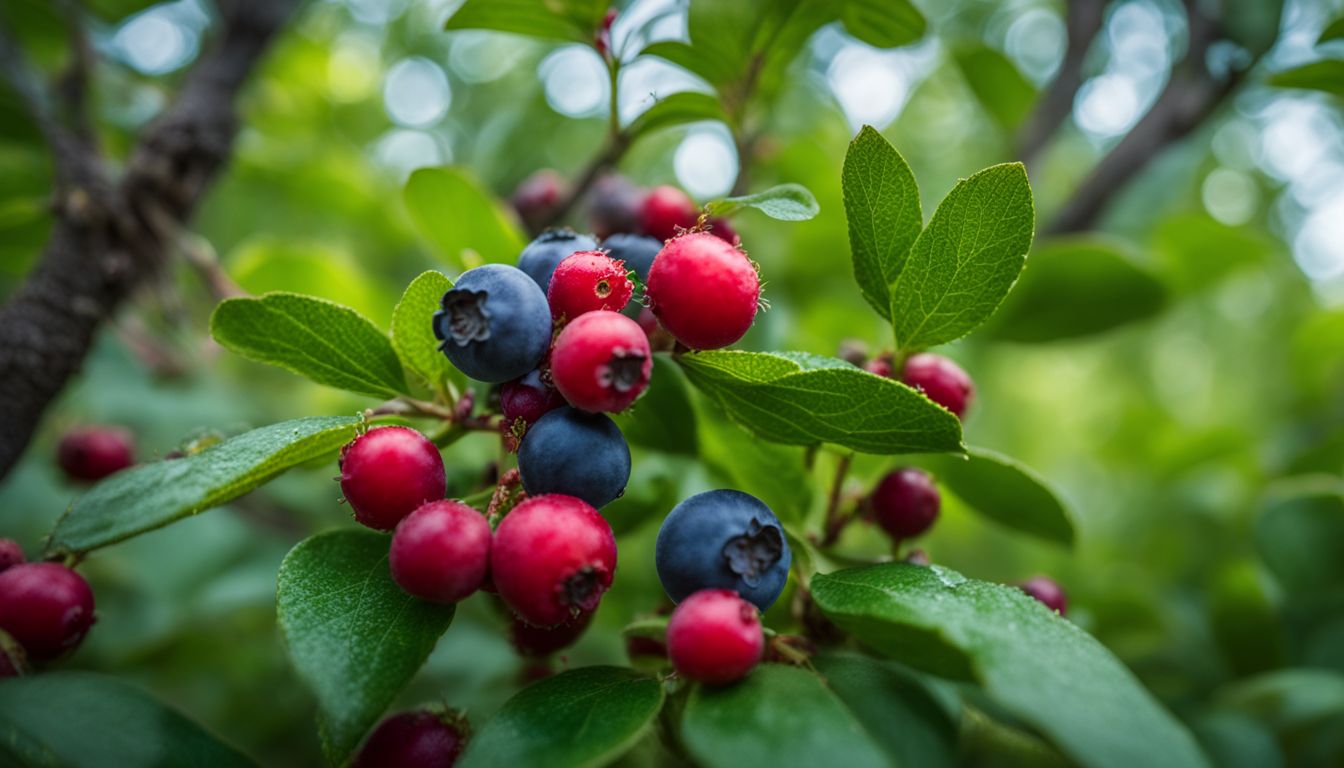
To successfully grow blueberries at home, follow these steps: choose the right variety, select a suitable planting site, prepare the soil by adding organic matter and adjusting pH levels if necessary, plant the blueberry bushes at the proper depth, and provide regular care and maintenance including watering and mulching.
Choosing the right variety
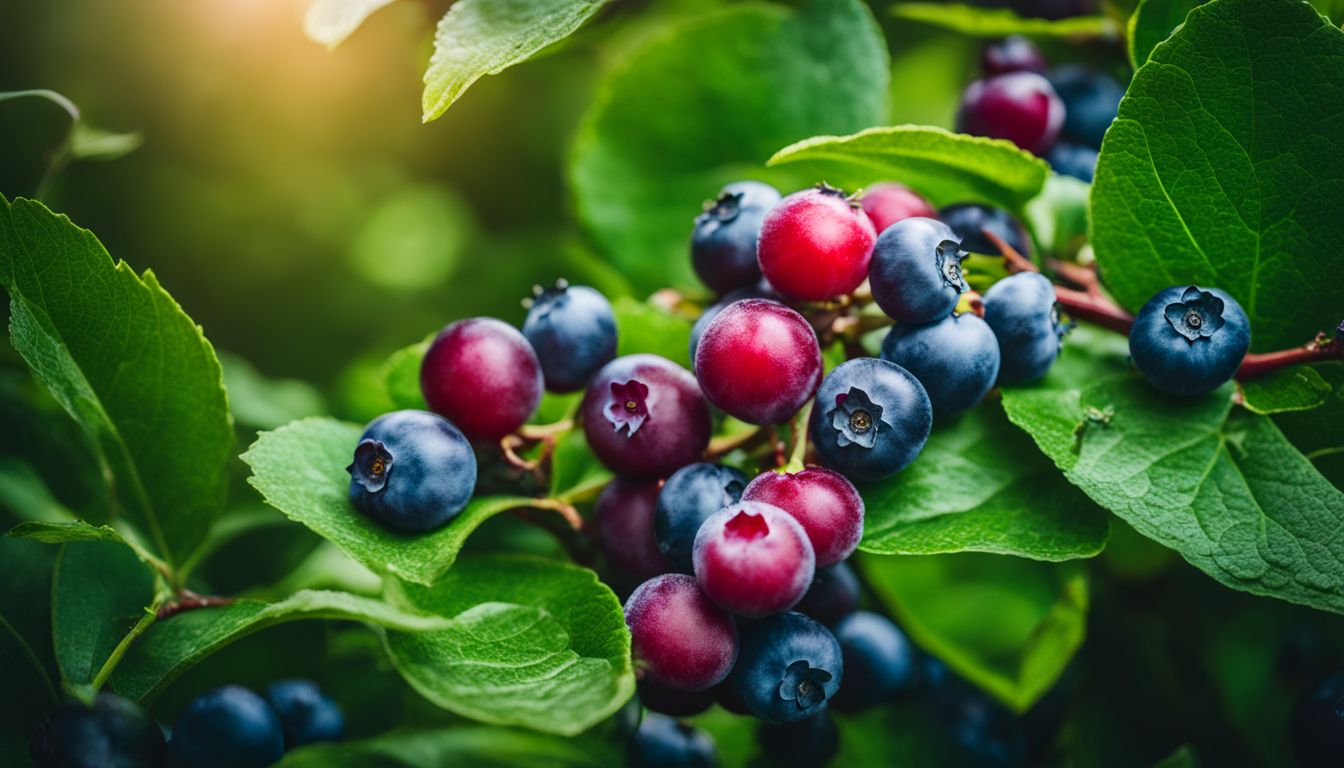
Choosing the right variety of blueberries is important for a successful home garden. There are many different types to choose from, such as highbush and lowbush varieties. Consider your climate zone and local soil conditions when selecting a variety that will thrive in your area.
Some blueberry plants can self-pollinate, while others require cross-pollination with another variety for fruit production. It’s also helpful to research the size and growth habits of different varieties to ensure they fit well in your garden space.
Selecting a suitable planting site
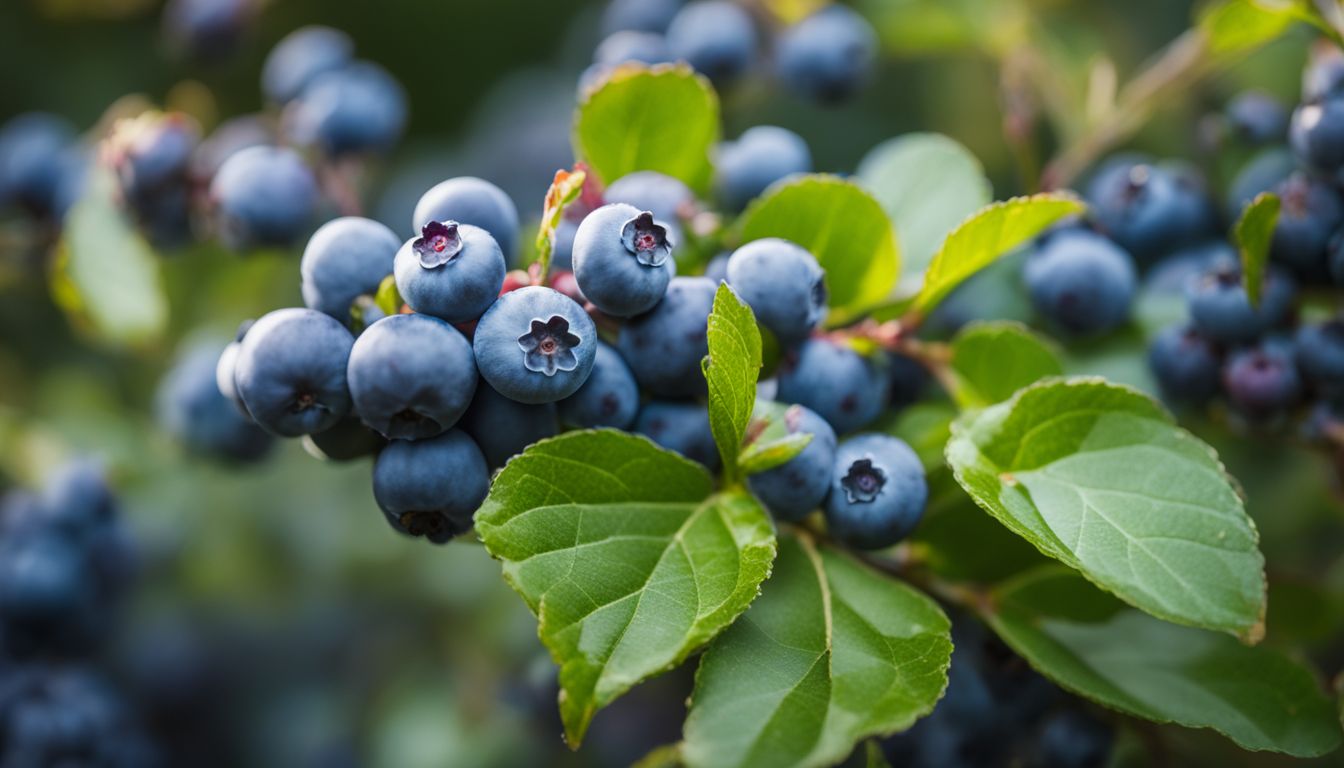
To grow blueberries successfully, it’s important to select the right spot in your garden. Blueberries thrive in full sun, so find a warm and bright area with at least 6 to 8 hours of direct sunlight each day.
Make sure the soil is well-drained and has a pH level between 4.5 and 5.5, which is slightly acidic. If your soil isn’t naturally acidic, you can lower the pH by adding organic matter like peat moss or using sulfur-based products.
Avoid planting blueberries near trees or shrubs that have shallow roots because they can compete for nutrients and water. By choosing a suitable planting site for your blueberry bushes, you’ll give them the best chance to grow healthy and produce delicious berries.
Preparing the soil
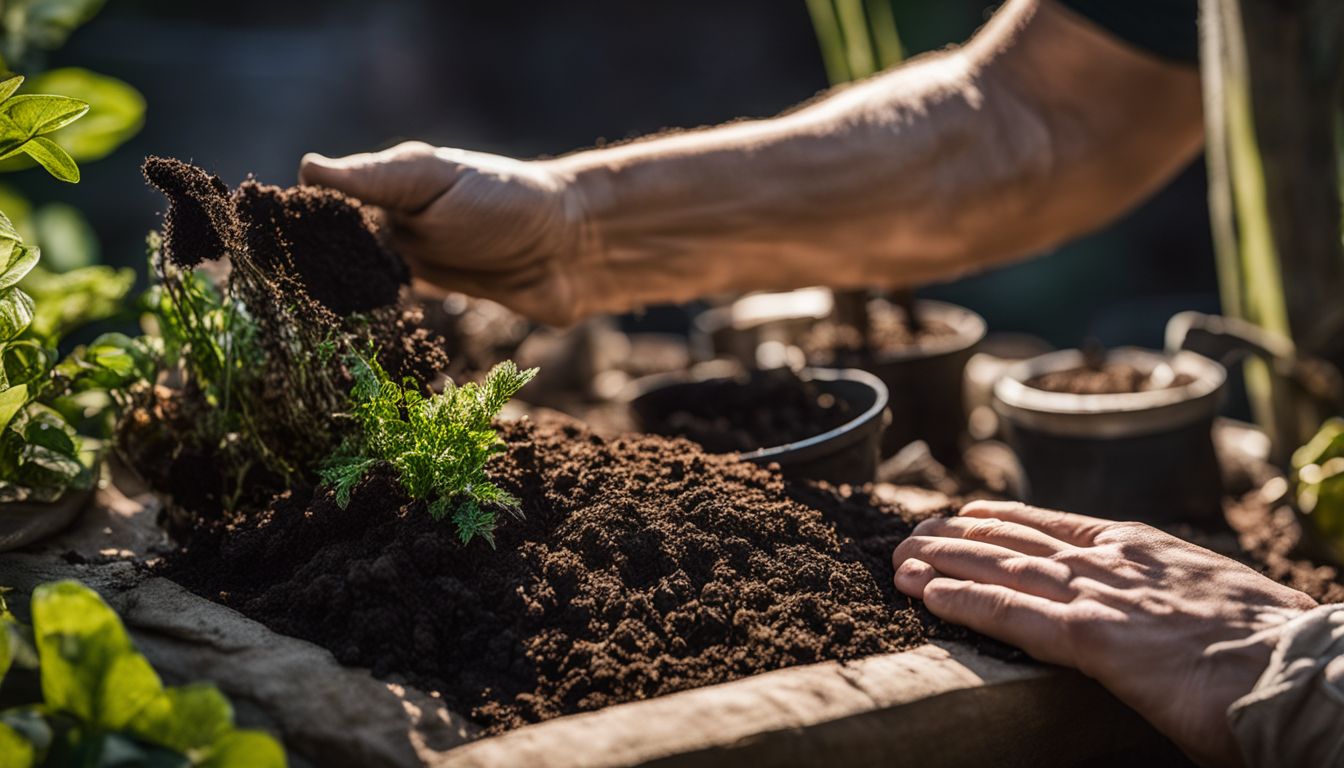
To grow blueberries successfully, it’s important to prepare the soil properly. Blueberries thrive in acidic soil with a pH level between 4 and 5.5. One way to lower the pH is by adding organic matter such as peat moss or pine needles to the soil.
These amendments help create the right conditions for blueberry plants to absorb nutrients effectively. It’s also essential to ensure good drainage because blueberry roots don’t like waterlogged soil.
Before planting your blueberry bushes, make sure you loosen the soil and remove any weeds or grass from the area. This will give your blueberries a healthy start and increase their chances of producing abundant and delicious fruits later on.
Planting the blueberry bushes

To plant blueberry bushes, choose a sunny spot in your garden with well-draining soil. Before planting, make sure to prepare the soil by adding organic matter like peat moss or compost.
Dig a hole slightly larger than the root ball of the blueberry bush and place it in the hole at ground level. Backfill with soil and water thoroughly. Blueberries prefer acidic soil, so you may need to adjust the pH if necessary using sulfur or other amendments.
Mulch around the base of the bushes with pine needles or wood chips to retain moisture and suppress weeds. Remember to water consistently to keep the roots moist but not soggy.
Providing proper care and maintenance
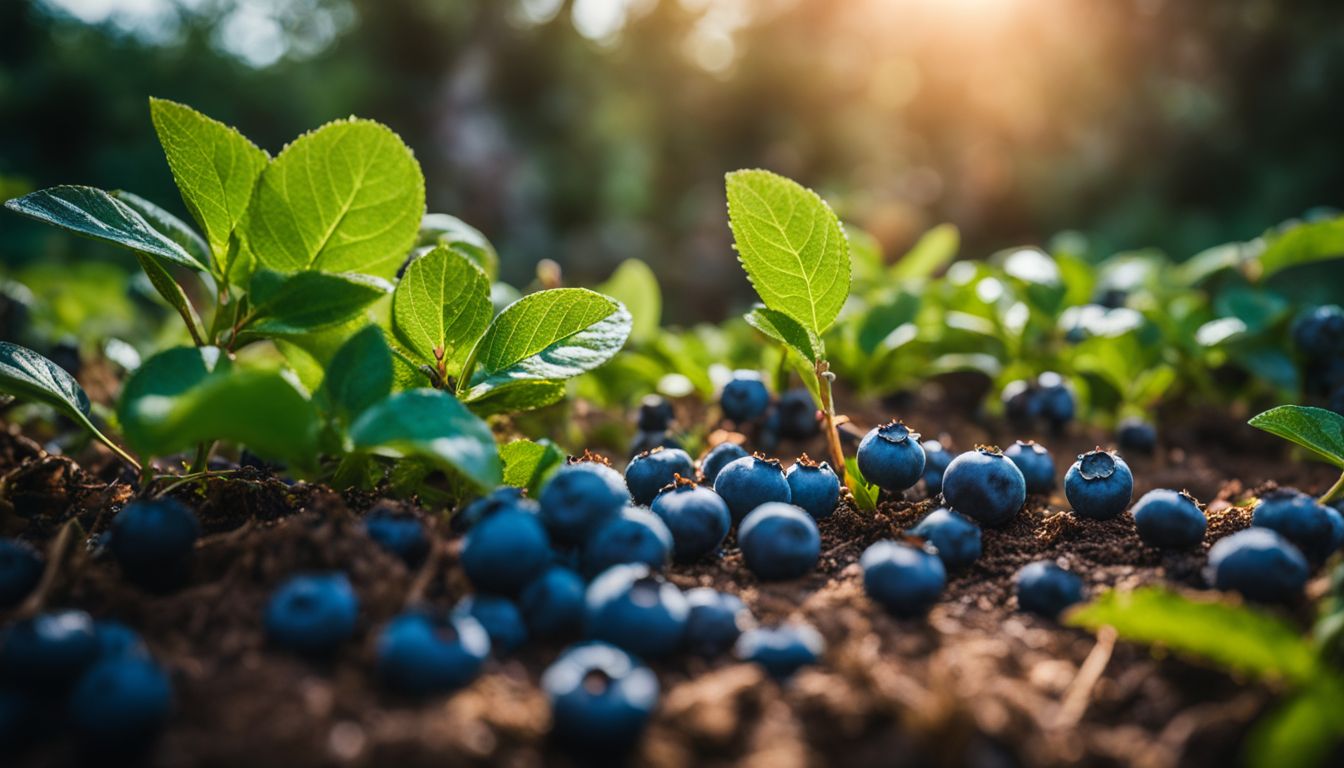
To keep your blueberry plants happy and healthy, there are a few key things you need to do. First, make sure they’re getting enough water. Blueberries have shallow roots, so watering them regularly is important.
Next, apply mulch around the base of the plants to help retain moisture and control weeds. It’s also crucial to fertilize your blueberries with an acidic fertilizer every spring and summer.
Pruning is another essential task – remove any dead or damaged branches and thin out crowded areas to promote airflow and sunlight penetration. Lastly, be on the lookout for pests and diseases that can damage your blueberry bushes, such as birds, aphids, mites, or fungal infections.
Taking preventive measures like netting or using organic pest control methods can help protect your plants effectively.
Pruning and Harvesting Blueberries
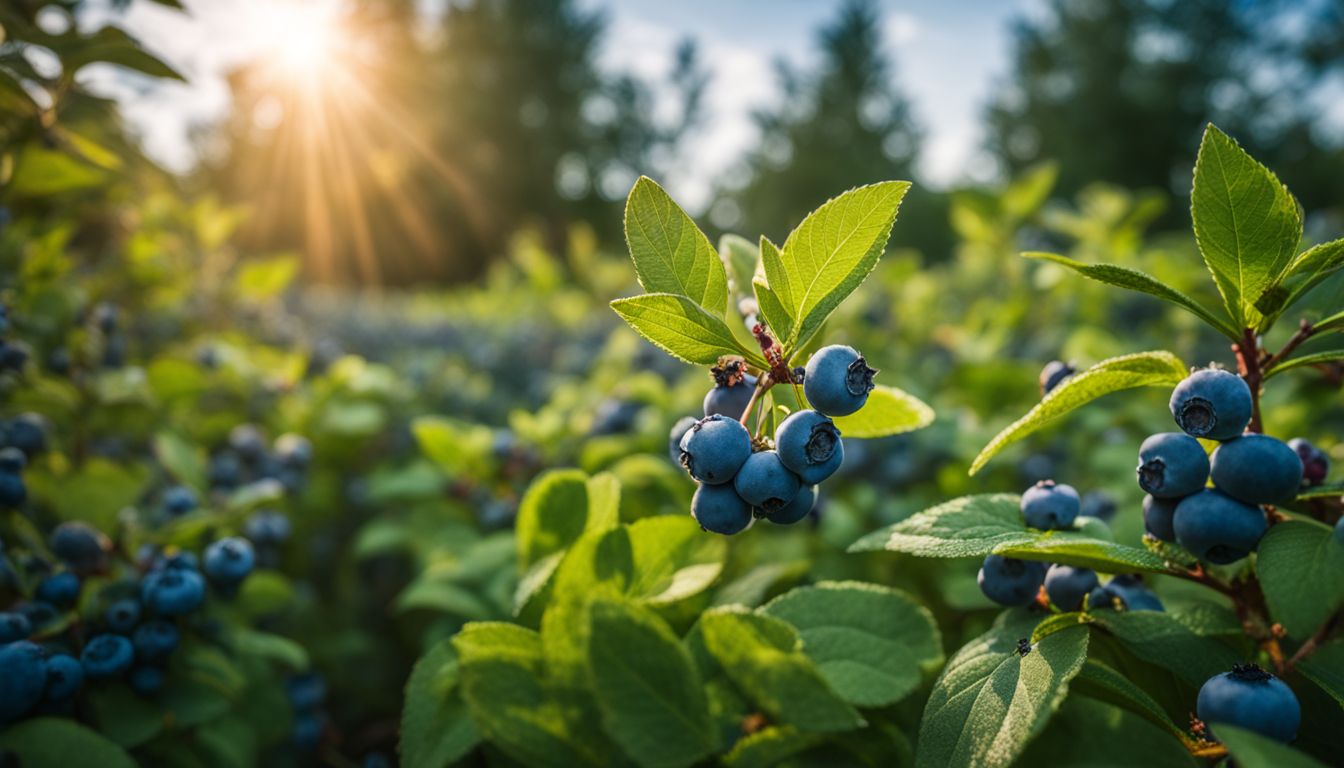
To ensure healthy growth and maximum yield, pruning blueberry bushes should be done during the dormant season. Prune away any dead or diseased branches, as well as any low-growing shoots that may hinder airflow.
When it comes to harvesting blueberries, wait until they are fully ripe and easily detach from the bush with a gentle tug. Enjoy the fruits of your labor!
Pruning techniques
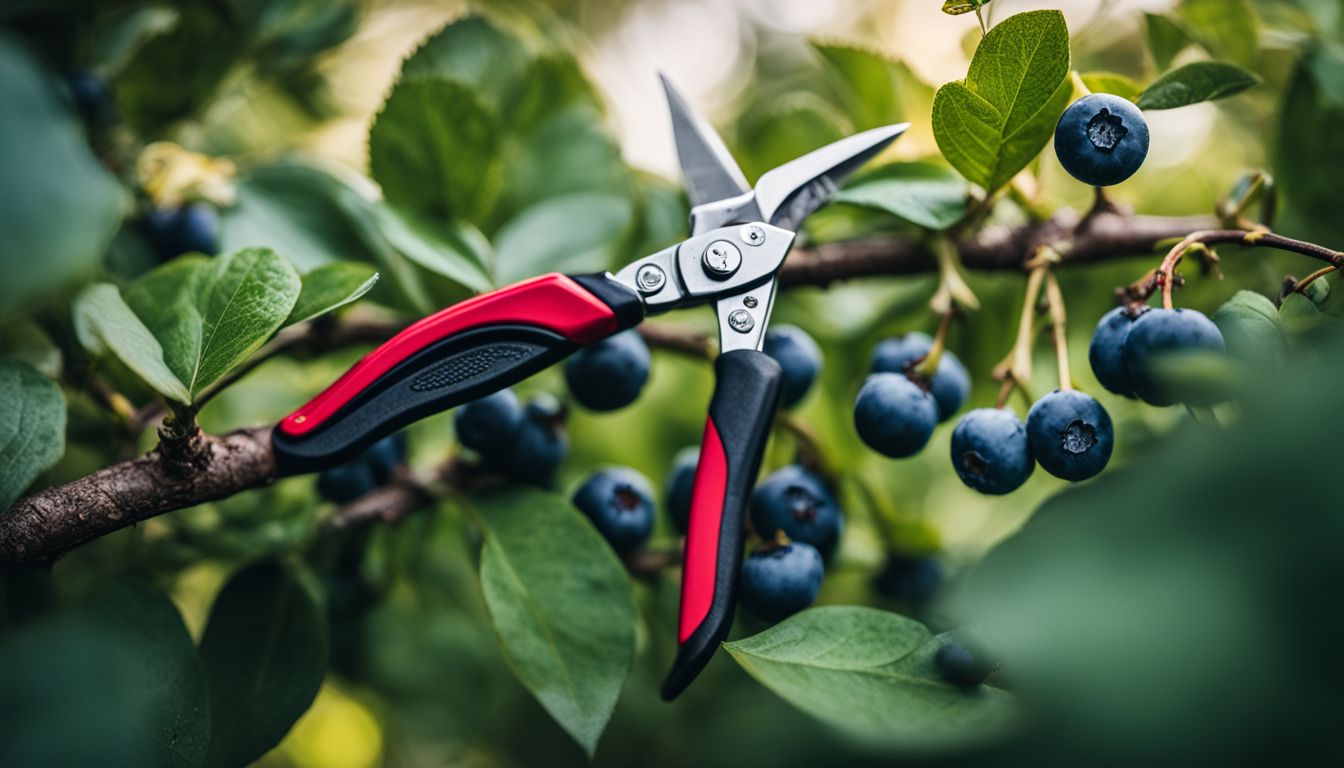
Pruning blueberry bushes is an important part of their care and maintenance. It helps promote better air circulation, sunlight penetration, and fruit production. To prune your blueberry bushes, start by removing any dead or damaged branches.
Then, trim back any weak or overcrowded stems to encourage new growth. Remember to always use clean pruning shears to prevent the spread of diseases. Prune your blueberries during late winter or early spring before new growth begins.
By following these pruning techniques, you can ensure healthier and more productive blueberry plants in your garden!
Harvesting tips
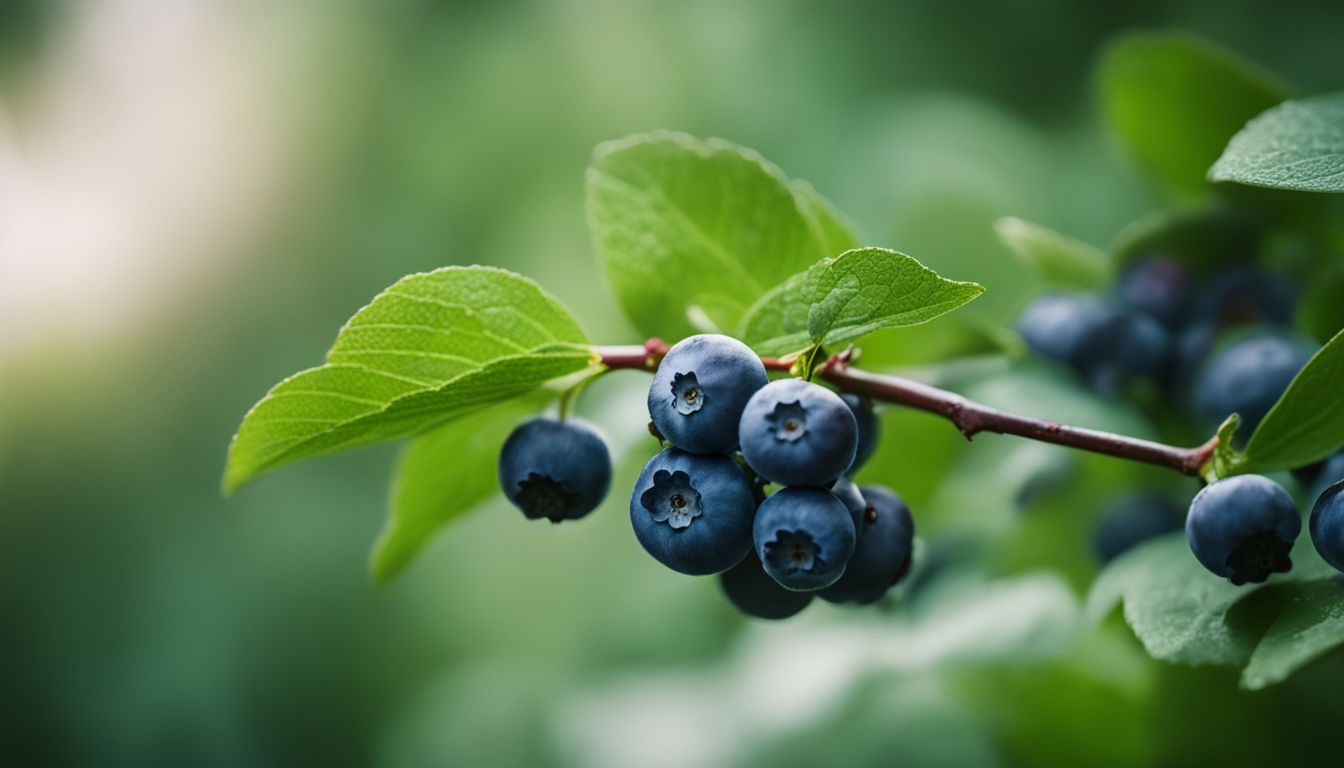
When it comes to harvesting blueberries, timing is key. You want to wait until the fruits are plump and juicy before picking them. Generally, this happens during the summer months.
To harvest your blueberries, simply grasp the fruit gently and give it a slight twist or tug – if it comes off easily without resistance, then it’s ready to be picked! Remember not to yank or pull too hard as you may damage the plant.
It’s also important to check for any berries that are overripe or moldy and remove them from the bush. By following these tips, you’ll be able to enjoy delicious homegrown blueberries at their peak of flavor!
Growing Blueberries in Containers
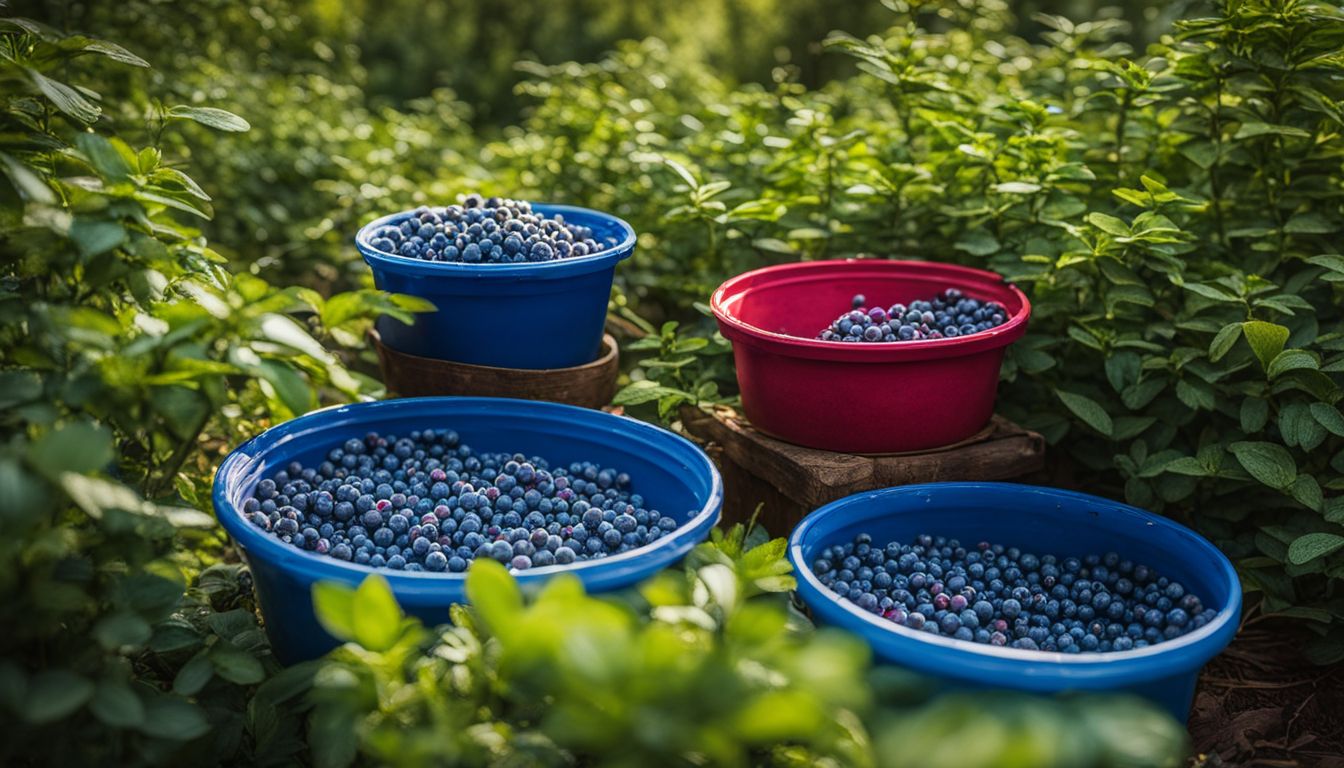
Growing blueberries in containers is a convenient option for those with limited space or wanting to control the soil conditions.
Suitable container options
Here are some suitable container options for growing blueberries in your home garden:
- Choose a pot or container that is at least 18 inches in diameter and 16 inches deep. This will provide enough space for the blueberry roots to grow.
- Look for pots made of durable materials like plastic or ceramic that have good drainage holes at the bottom. This will ensure proper water drainage and prevent root rot.
- Opt for containers with handles or wheels, as these can be easily moved to different locations to adjust sunlight exposure or protect the plants from extreme weather conditions.
- Consider using self – watering containers, which have a reservoir at the bottom that gradually releases water to the roots as needed. This helps maintain consistent moisture levels, especially during hot summer months.
- Alternatively, you can repurpose large buckets or barrels by drilling drainage holes in the bottom. Just make sure they are clean and free from any chemical residue.
Proper care for container-grown blueberries
I have found that growing blueberries in containers is a great option for those with limited space. Here are some tips for properly caring for your container-grown blueberries:
- Choose the right container: Select a large and sturdy container that has drainage holes at the bottom. This will allow excess water to escape and prevent root rot.
- Use acidic soil: Blueberries thrive in acidic soil, so use a potting mix specifically formulated for acid-loving plants. You can also add some peat moss to increase the acidity of the soil.
- Provide enough sunlight: Place your blueberry container in a spot where it will receive full sun for at least six hours a day. This will ensure proper growth and fruit production.
- Water regularly: Container-grown blueberries require regular watering to keep the soil consistently moist. However, avoid overwatering as this can lead to root rot. Always check the top inch of soil before watering.
- Fertilize appropriately: Blueberries grown in containers will need regular fertilization since nutrients can leach out more quickly from pots than from the ground. Use a slow-release fertilizer formulated for acid-loving plants according to package instructions.
- Prune strategically: Pruning helps maintain the shape and size of your blueberry plant, as well as improves airflow and prevents disease spread. Prune any dead or damaged branches and remove low-hanging branches that touch the ground.
- Protect from pests: Container-grown blueberries are less susceptible to pests than those grown in the ground, but it’s still important to monitor for any signs of pests like aphids or mites. Use organic pest control methods if necessary.
Common Pests and Diseases
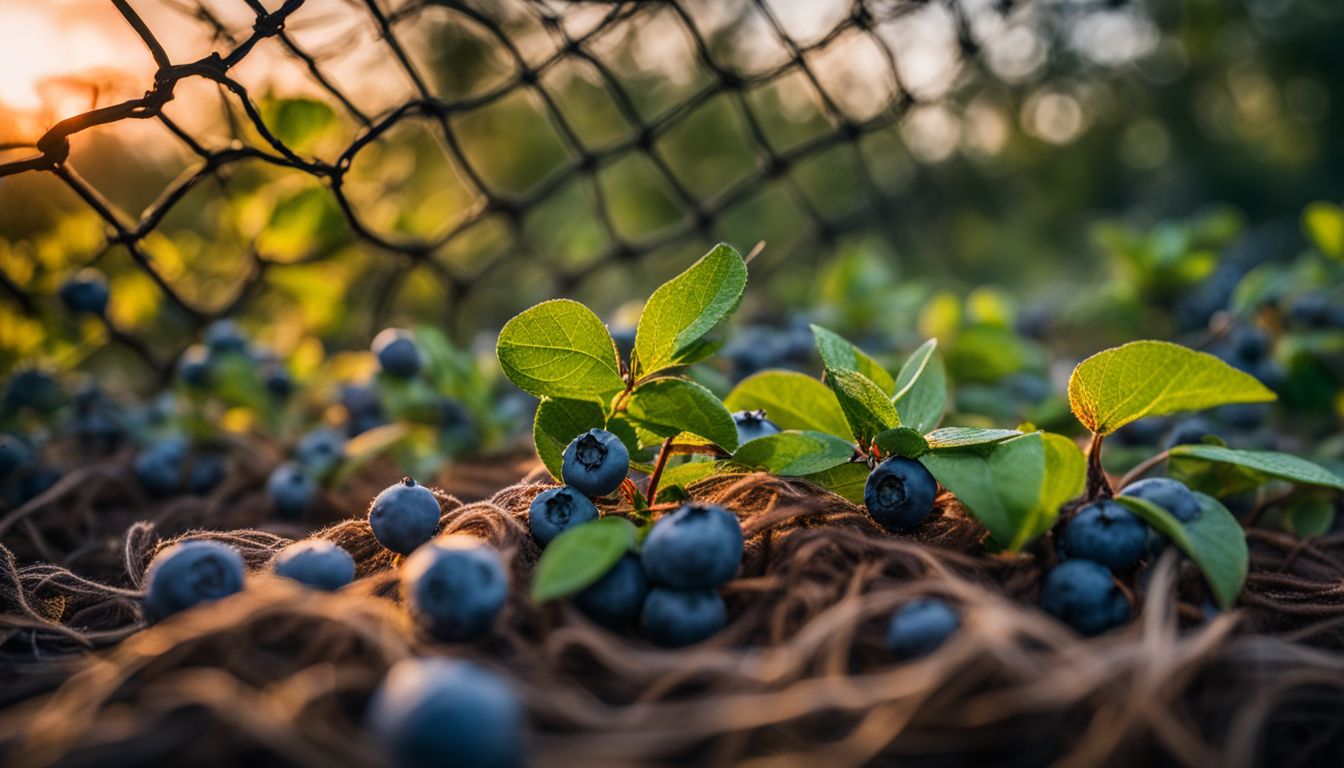
To avoid common pests and diseases when growing blueberries, it is important to regularly inspect your plants for signs of trouble and take preventative measures.
Identifying and preventing pests
Pests can be a problem when growing blueberries at home. Here are some common pests you might encounter and ways to prevent them:
- Aphids: These small insects feed on the sap of plants and can damage new growth. To prevent aphids, regularly inspect your plants for signs of infestation, like curled leaves or sticky residue, and spray them with a strong stream of water. Ladybugs and lacewings are natural predators of aphids.
- Birds: Birds love to eat blueberries, so protecting your bushes is essential. Use bird netting or scare devices like reflective tape or fake owls to keep them away.
- Fruit Flies: These tiny flies are attracted to ripe fruit and can ruin your blueberry harvest. To prevent fruit flies, pick ripe berries promptly and store them in the refrigerator.
- Spotted Wing Drosophila: This invasive fruit fly lays eggs inside ripening berries, causing them to rot prematurely. To control this pest, harvest your blueberries frequently and freeze any infested fruit before it spreads.
- Japanese Beetles: These beetles feed on the leaves of blueberry bushes, causing severe damage. Handpick them off your plants or use insecticidal soap or neem oil spray as a deterrent.
Managing common diseases
One thing to keep in mind when growing blueberries is that they can sometimes be prone to certain diseases. Here are some tips for managing common diseases in your blueberry plants:
- Powdery mildew: This fungal disease appears as a white, powdery coating on the leaves and stems of the plant. To manage it, remove any infected parts and clean up fallen leaves from around the plant. You can also apply a fungicide labeled for powdery mildew control.
- Botrytis fruit rot: This disease causes gray mold to develop on ripening berries. To prevent it, make sure there is good air circulation around the plants by spacing them properly. Remove any infected berries and avoid overhead watering.
- Anthracnose: This disease causes small, sunken spots on the berries and can lead to their premature decay. To manage it, remove and destroy any infected fruit as soon as you notice them. Apply a fungicide if needed.
- Phytophthora root rot: This soil-borne fungus can cause root rot in blueberry plants. To prevent it, choose varieties that are resistant to this disease and ensure proper drainage in the planting area.
- Virus diseases: Blueberry scorch virus and blueberry shock virus are two common viral diseases that affect blueberries. There is no cure for these viruses, so prevention is key. Buy certified virus-free plants from reputable nurseries and practice good sanitation by removing and destroying any infected plants.
Tips for Storing and Preserving Blueberries
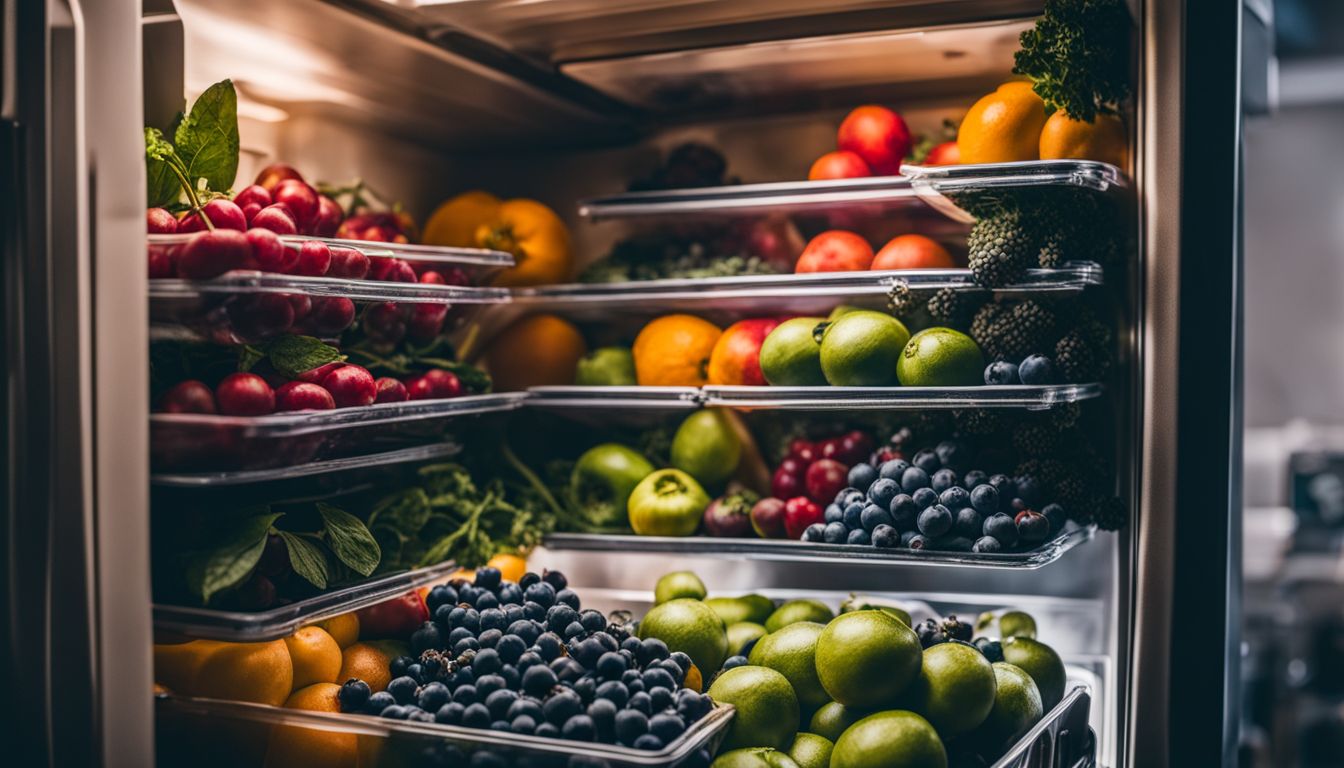
To keep your blueberries fresh and delicious, store them unwashed in the refrigerator in a sealed container or bag.
Proper storage techniques
After harvesting your delicious blueberries, it’s important to store them properly to maintain their freshness and flavor. Start by removing any damaged or overly ripe berries, as they can quickly spoil the others.
Place the remaining berries in a clean container and store them in the refrigerator. Blueberries are best when stored unwashed to prevent excess moisture that can lead to mold growth.
When you’re ready to enjoy, simply rinse them just before eating or using in your favorite recipes. Stored this way, fresh blueberries can last up to a week in the fridge!
Freezing and preserving methods
Preserving blueberries is a great way to enjoy their deliciousness all year round. One easy method is freezing them. Simply wash the berries, remove any stems and leaves, and pat them dry.
Then, spread the blueberries in a single layer on a baking sheet and place it in the freezer until they are firm. Once frozen, transfer them into resealable plastic bags or containers for long-term storage.
Another preserving method is making jam or jelly with your blueberries. Combine crushed blueberries with sugar and cook until thickened. Pour the mixture into sterilized jars and seal tightly for future enjoyment.
Conclusion

In conclusion, growing blueberries at home is a rewarding and enjoyable experience. With their delicious taste and numerous health benefits, blueberries are a great addition to any vegetable garden.
Whether you plant them in the ground or in containers, following the proper steps for planting and care will ensure a bountiful harvest of these nutritious berries. So why not give it a try? Start growing your own blueberries today and enjoy the satisfaction of picking fresh, flavorful fruits right from your backyard!
FAQs
1. How do I plant blueberries at home?
To plant blueberries, you need to pick a type of blueberry like highbush or rabbiteye. Amend the soil to lower the pH as these plants grow best in acidic soil, similar to azalea and rhododendron.
2. When is the best time to plant my blueberries?
Blueberries can be planted around 3 to 4 months before planting your other garden vegetables. Check with your local garden center or cooperative extension for precise timing for zone 3 or zone 5.
3. Do I need more than one kind of blueberry plant?
Yes! Planting more than one kind helps harvest many different varieties of berries and boosts fruit production as some types do better when near other bushes.
4.How big should the pots be if I choose growing blueberries in them?
Opt for pots that are about 6 to12 inches deep per plant so that they support strong root system growth without causing struggle.
5.What care routine keeps my bushes healthy after planting?
Keep soil pH low, use ground cover around the bushes, and clear all hard-to-grow weeds from your berry patch regularly.
6.Is it true that anybody can grow this vegetable easily at home?
Yes! Blueberries are easy and one of nature’s simplest fruits to grow at home – even newbies will love growing them!

























